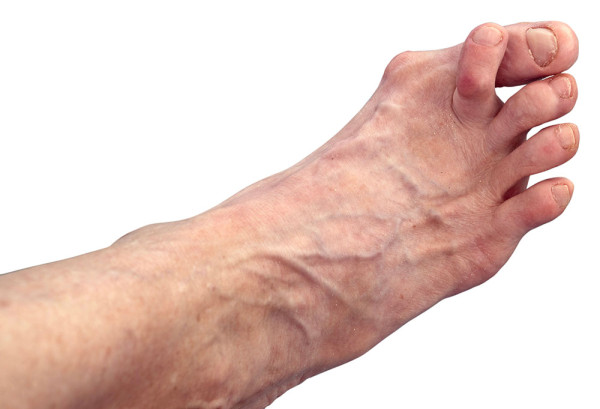Overlapping toes Matiwae inaki
Overlapping toes are toes that turn in and lie on top of the toe next to them. They are also known as overriding toes. This condition can affect any toe, but it is most common in the second and little toes. If it is not corrected, it can cause extreme irritation, pain and calluses.
Causes of overlapping toes
Toe deformities can happen at any age. They are relatively common among pēpi and very small tamariki , but more common in older people.
Babies and children
In pēpi, 2 things are believed to cause overlapping toes:
- genetics (it runs in families)
- the position of the pēpi in the uterus.
It is rare for tamariki to outgrow overlapping toes. The condition can become worse if it is not treated.
Pēpi can also have another condition called curly toes. This involves the third, fourth, and little toes of both feet curling under the foot, rather than one lying on top of the other. This usually is not painful, and the condition usually fixes itself by the time the tamaiti is 4 years old.
Adults
Some people gradually develop overlapping toes. This can happen because of:
- foot problems like arthritis and bunions
- untreated injuries like broken toes
- shoes that squeeze your toes or have high heels.

Photograph of a patient's foot with overlapping toes
Treating overlapping toes
Overlapping toes are either:
- fixed (you cannot move them back into the correct position)
- correctable (you can manually move them).
Over time, correctable overlapping toes can become fixed. Fixed overlapping toes can become more painful and lead to problems such as corns and calluses.
As long as an overlapping toe is not painful or affecting the way you walk, it does not need to be treated.
If it is painful or affecting the way you walk, the treatment depends on whether it is correctable or fixed.
Correctable overlapping toes
If your overlapping toe is correctable, strapping your toes together so the overlapping toe is in the right position can help to:
- ease any pain
- gradually return the toe to the right alignment
- prevent calluses from forming.
It can help to see a podiatrist or physiotherapist for some exercises to strengthen your foot muscles. They can also splint your toe if necessary to stop the overlapping toe from coming back after strapping has returned it to the correct position.
Find a podiatrist — Podiatry NZexternal link
Find a physiotherapist — Physiotherapy NZexternal link
Fixed overlapping toes
If your overlapping toe is fixed, you may need special shoes with extra depth around the toe to ease any pressure.
It can help to see a podiatrist to find out if orthotics or toe protectors will help.
If podiatry and physiotherapy do not help, you may need surgery. If this is the case, your healthcare provider will refer you to an orthopaedic (bone) surgeon.
Preventing overlapping toes
You cannot avoid overlapping toes if you are born with them, but you can stop them from getting worse.
The most important thing is to make sure you wear shoes that fit you properly. Podiatrists suggest you get your feet measured properly. Then, when buying shoes:
- make sure there is a centimetre of space for your longest toe at the end of each shoe when you are standing
- shop for your shoes at the end of the day — your feet naturally swell slightly during the day and tend to be bigger later in the day
- buy shoes that fit your longest foot
- always try shoes on before buying and make sure they are comfortable and have plenty of room — shoe sizes vary by brand, so it is best not to rely on size only
- make sure the tops of the shoes do not rub on your toes
- avoid shoes with pointed toes, and slip-on shoes that have no back strap, such as jandals
- buy wide shoes with good shock-absorbing soles.
You should also:
- limit the amount of time you wear high heels
- keep your toes flexible with stretches and exercises such as picking up objects with your toes.
When buying shoes for tamariki, make sure the shoes are fitted properly, especially at times the tamariki are growing quickly.
You can prevent many foot problems by following a few simple steps:
- wear comfortable shoes that fit properly, and avoid shoes that are too narrow
- wear shoes that are appropriate for your type of work and sport
- check your feet and toes regularly for any skin changes or deformities
- see a podiatrist if you have pain in a foot or toe
- stretch your foot daily to strengthen the muscles.